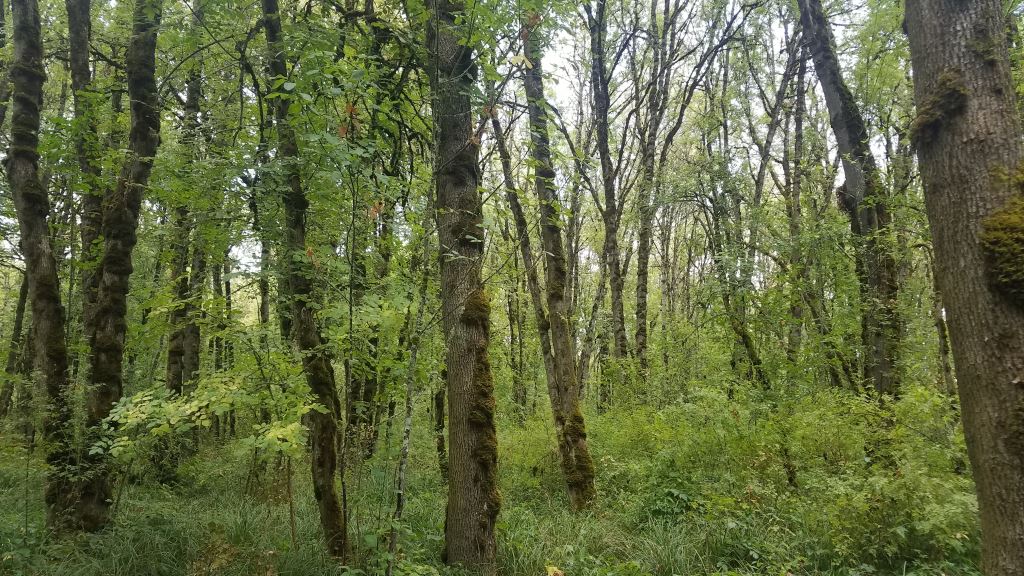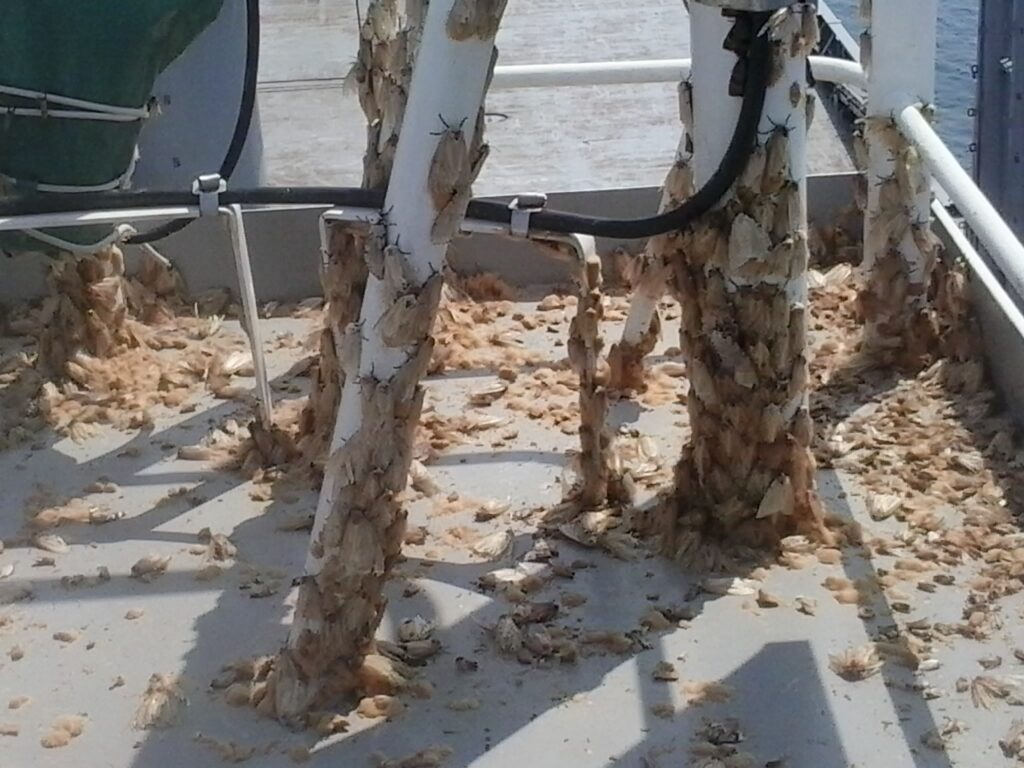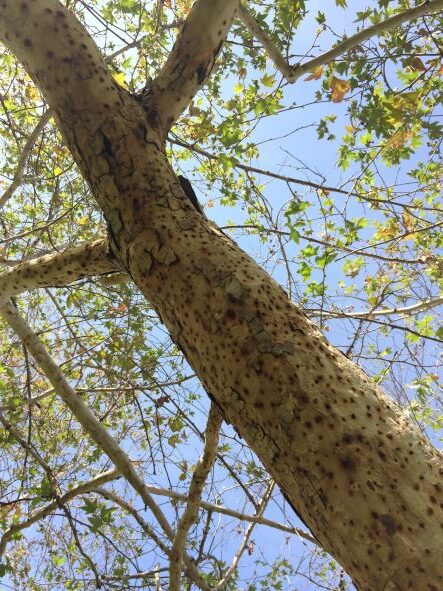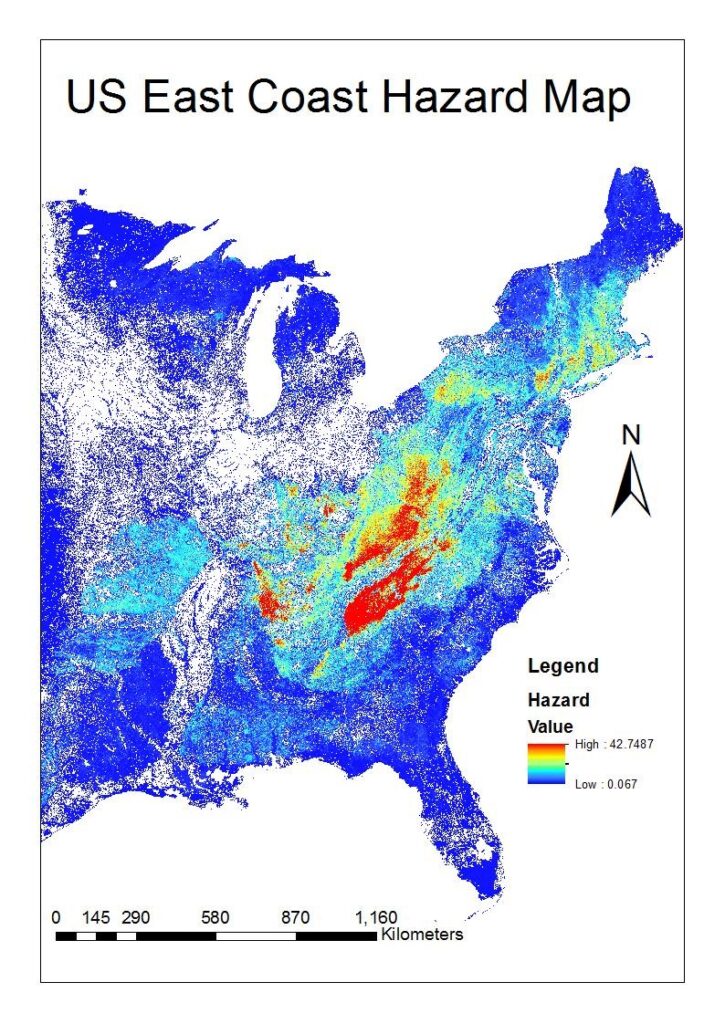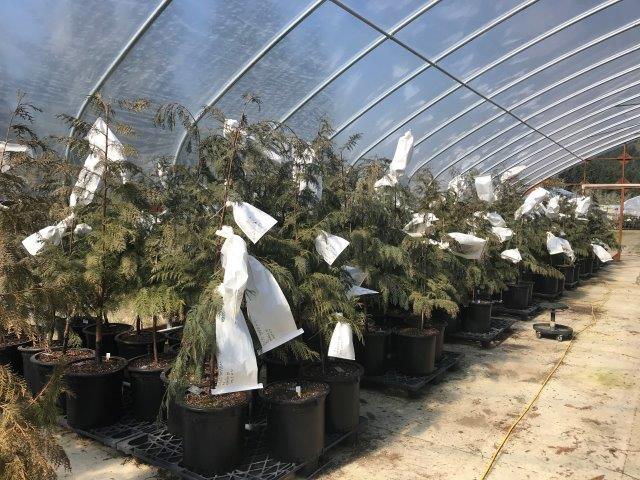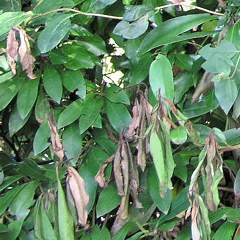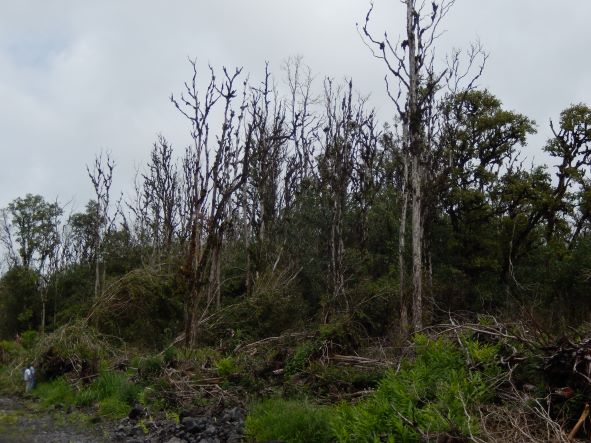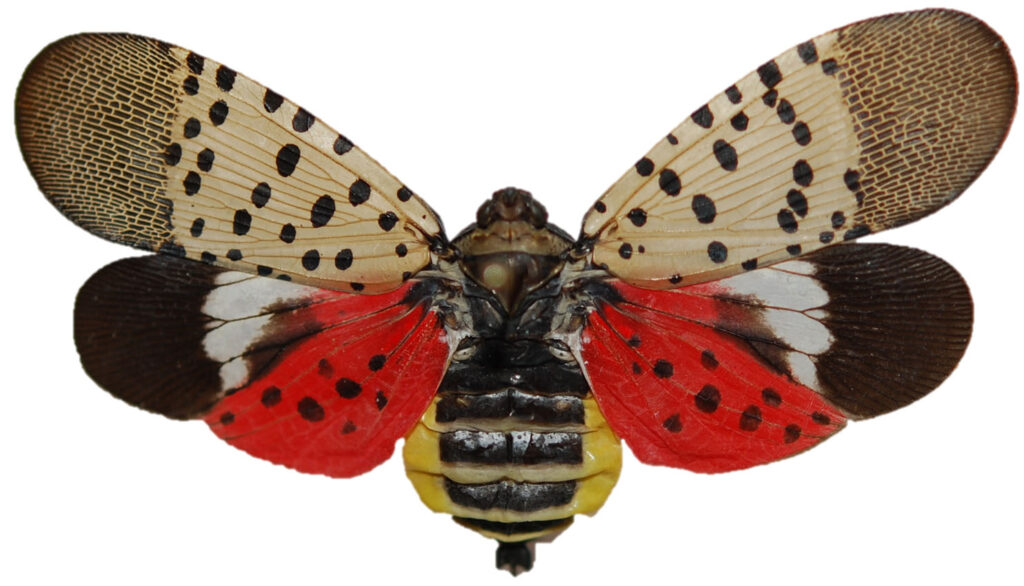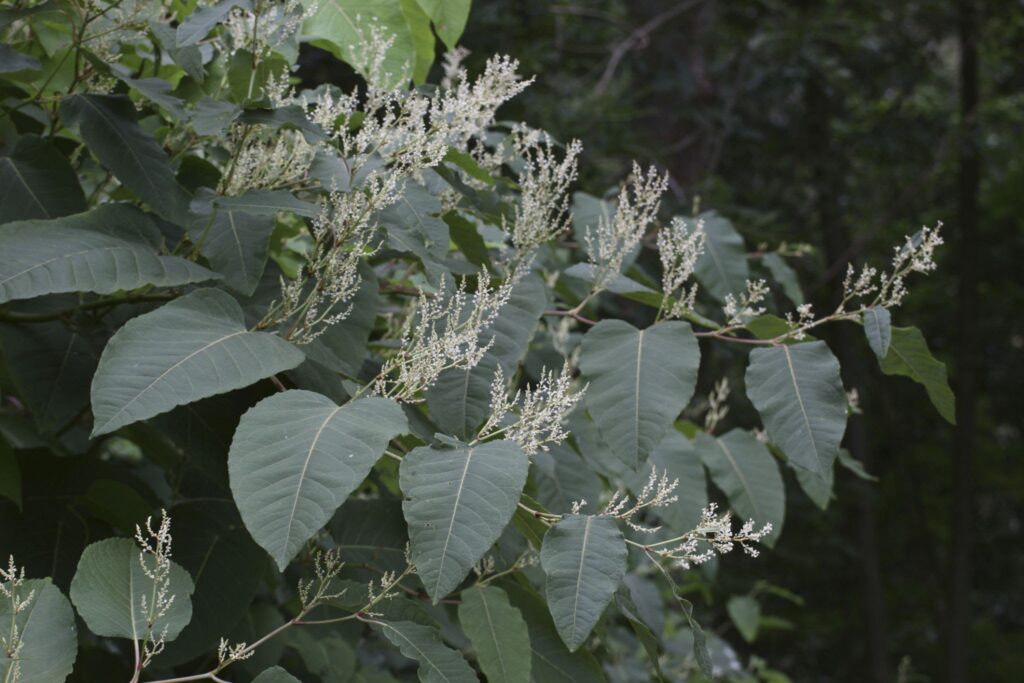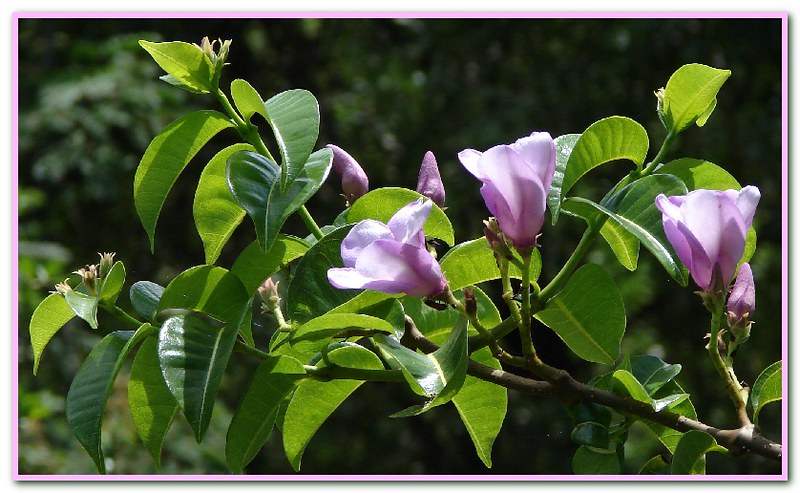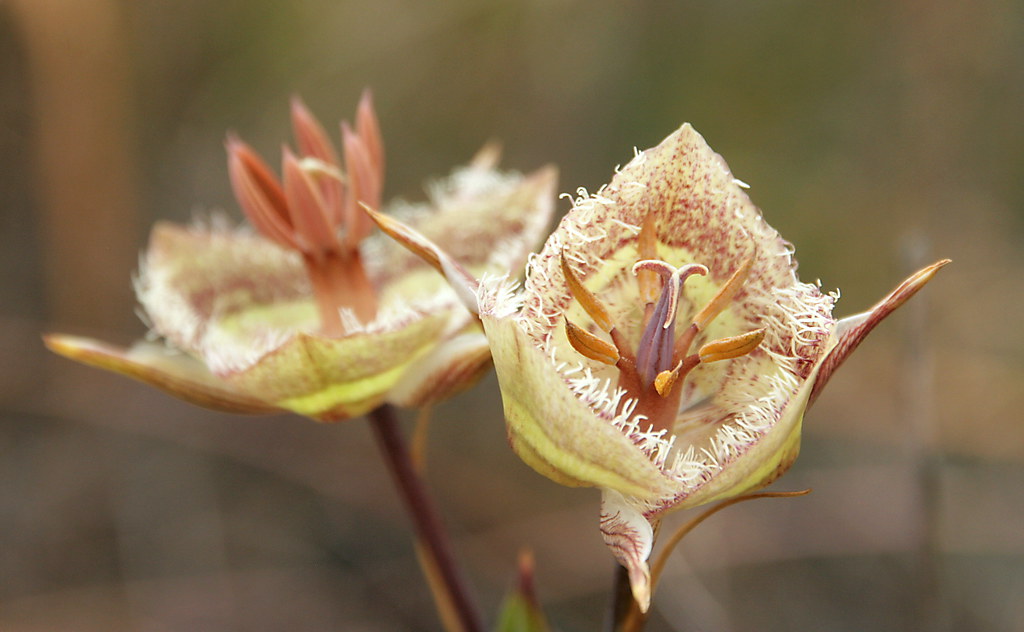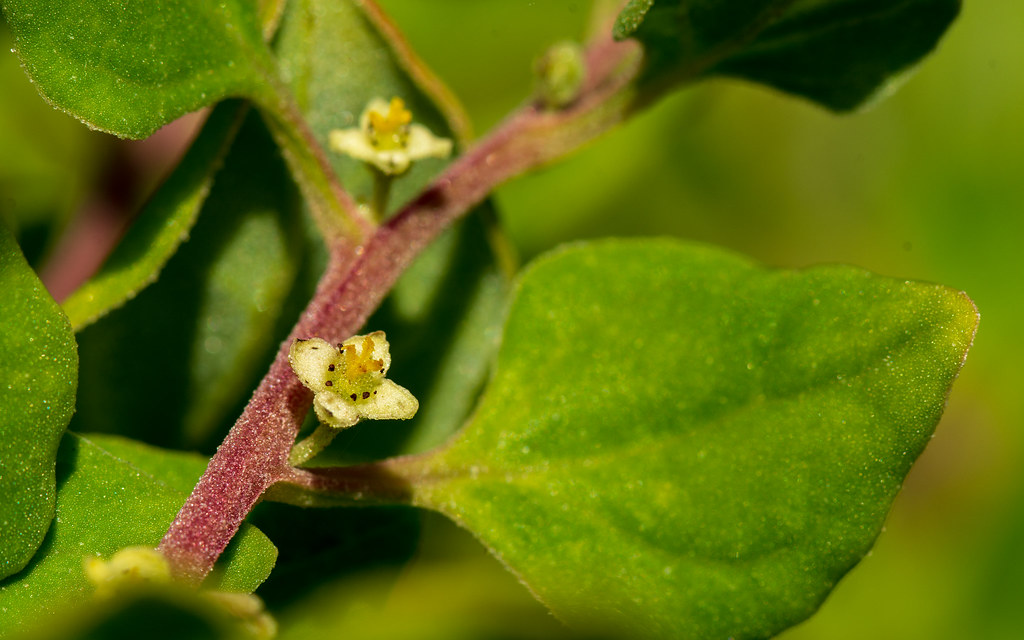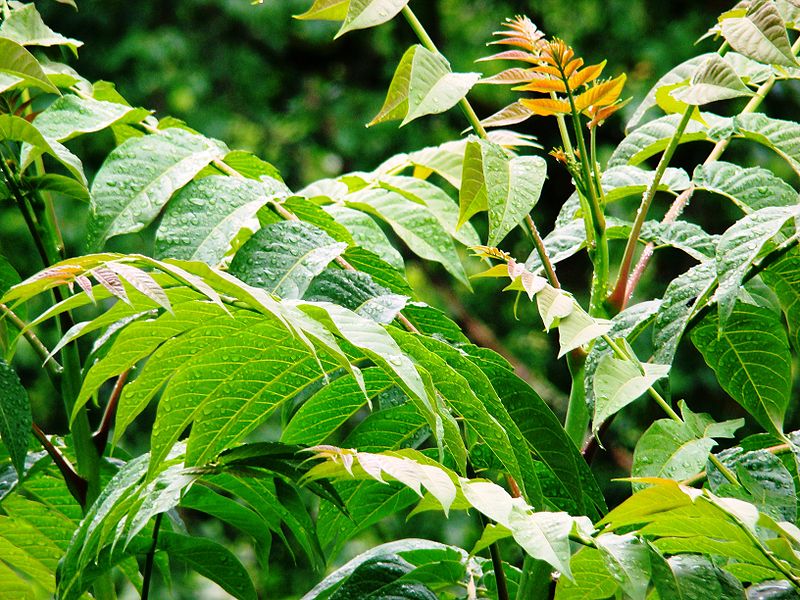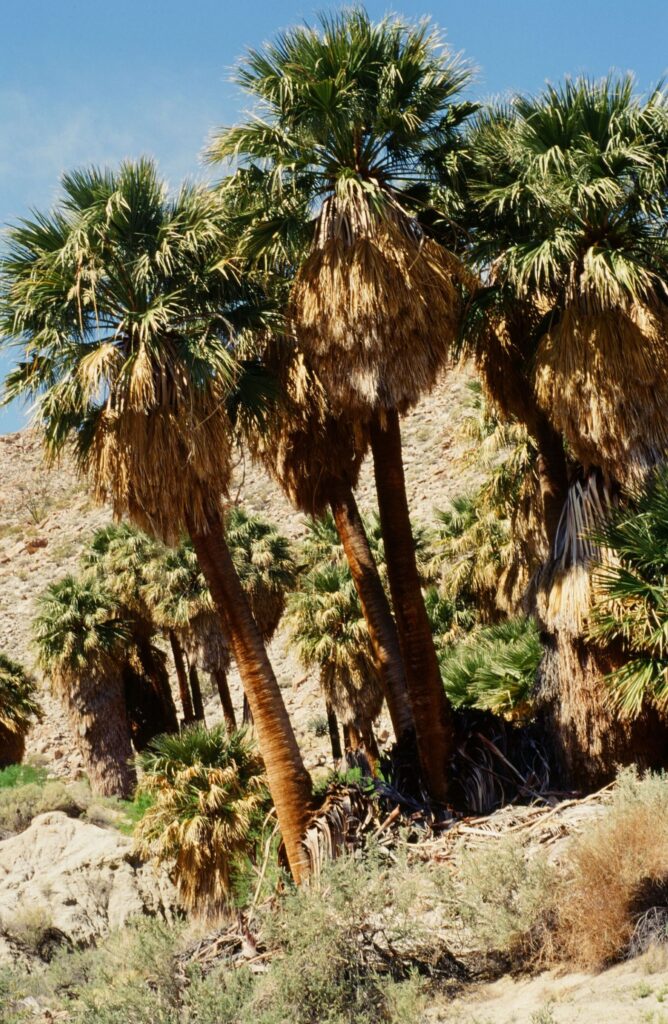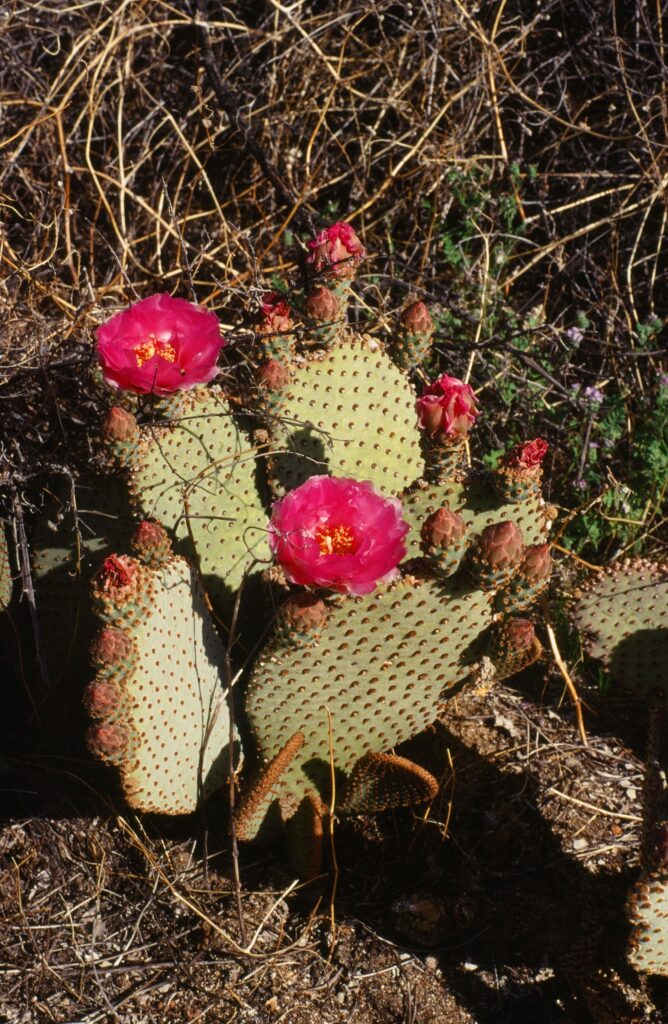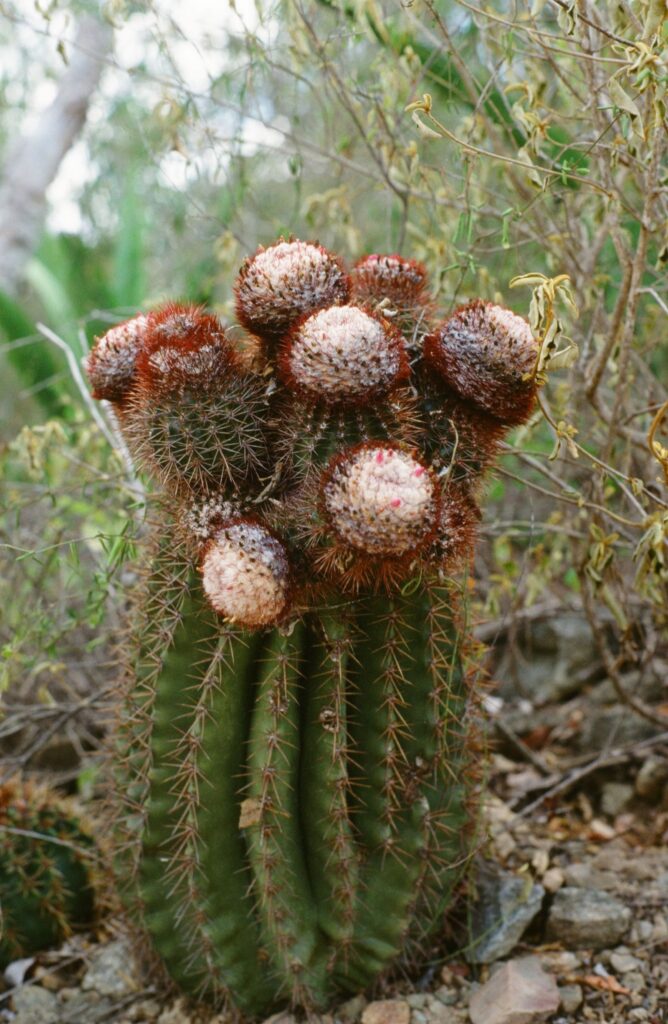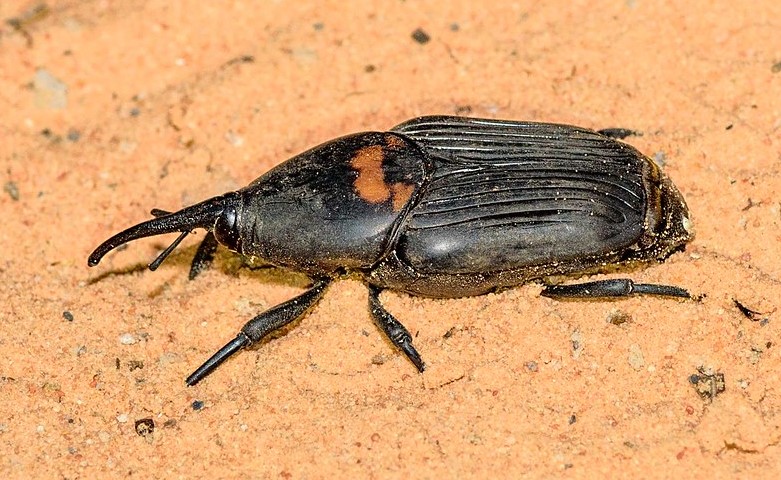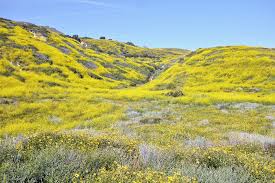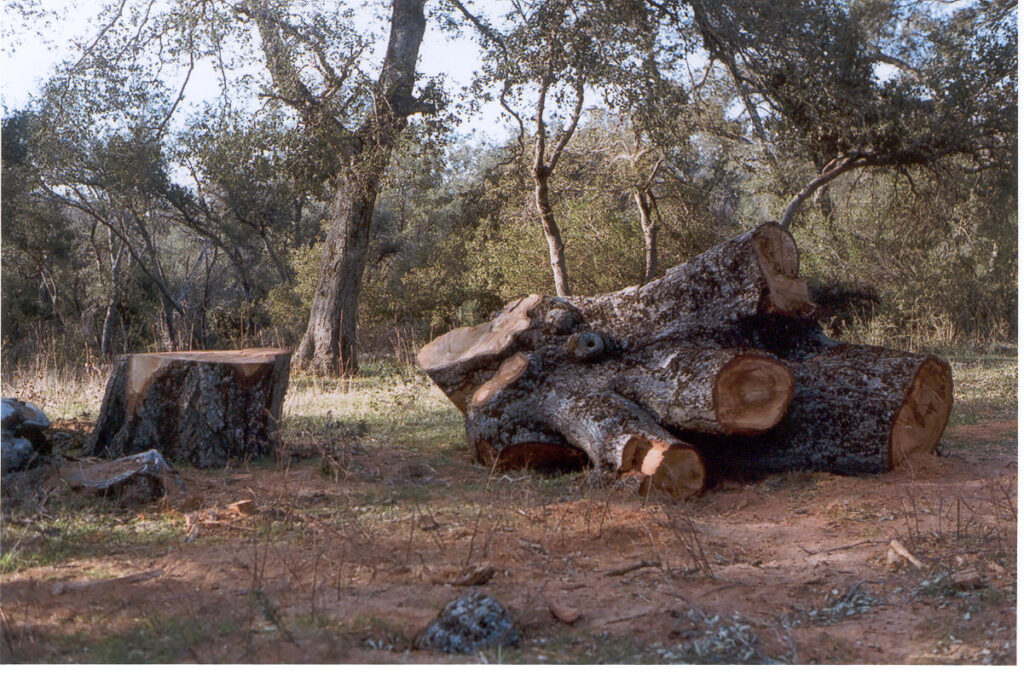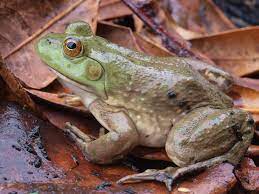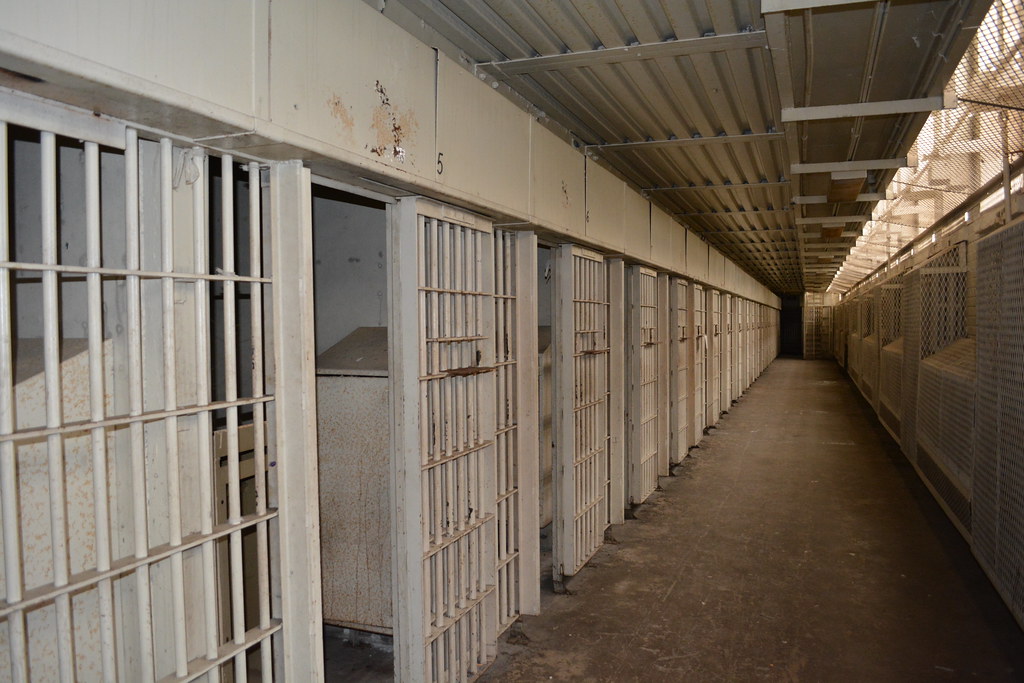Beech leaf disease (BLD) came to attention in 2012 near Cleveland. It has since spread to the Atlantic – Maine to New Jersey and northern Delaware; south into Virginia; north in Ontario; and west to eastern Michigan.
Scientists have scrambled to understand the disease – how it hijacks the tree’s metabolism; & here its impacts on seedlings, saplings, and mature trees; how it spreads, locations at greatest risk.
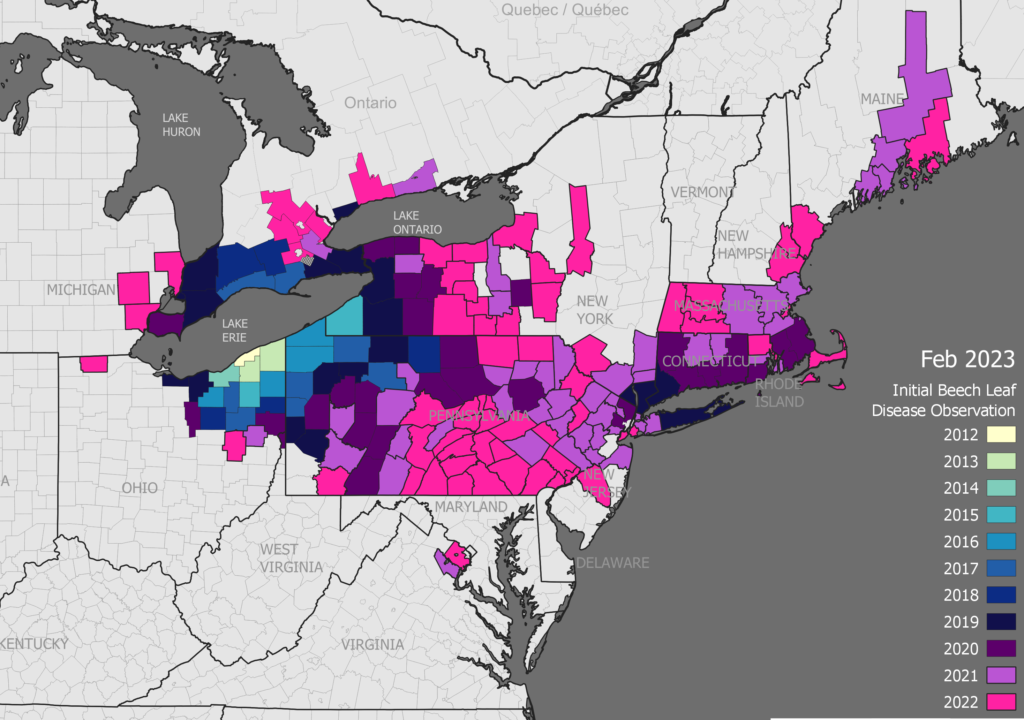
Many of us have despaired.
Now Bartlett Tree Research Laboratories – the research arm of Bartlett Tree Experts – has announced development of Integrated Pest Management (IPM) strategies to treat individual trees – sadly not yet beech in the forest. The project is led by Dr. Andrew Loyd and Dr. Matthew Borden.
Seeing the disease’s impacts on a tree species with aesthetic and ecological values not easily replaced, and its rapid spread, scientists at Bartlett Tree Research Laboratories began testing fungicides and nematicides registered under the Federal Insecticide, Fungicide and Rodenticide Act (FIFRA) by the U.S. Environmental Protection Agency (EPA) to see whether they might be effective against the causal nematode Litylenchus crenatae ssp mccannii.
As Drs. Loyd and Borden note, managing BLD presents numerous challenges:
1. The disease was discovered recently, so there were many unknowns, including how it spreads and the causal organism’s novel life cycle.
2. The damage occurs in leaf buds during winter dormancy. There has been little previous research on such a system. It is difficult for chemicals to reach the tissues.
3. Mature trees are large, so reaching the vulnerable leaves in the canopy is difficult.
4. Treatment efficacy cannot be evaluated until nearly a year after application.
5. Few chemicals are registered for use against foliar nematodes or for trees in forest, nursery, or landscape settings.
6. Obtaining funding is difficult because protecting beech is a low priority among many of the usual sources.
Fortunately, the leadership at Bartlett – the company’s research department, the New England Division leadership, and especially Robert A. Bartlett, Jr. (head of the family-owned company) – saw the importance of protecting beech and have supported this research. The USDA Forest Service has also funded some of studies exploring soil drenches. Cameron McIntire reports that these studies do not yet have results.
Furthermore, Bartlett has chosen to make the science easily available to all interested parties. Three posters explaining experiments to date are available at ResearchGate. They have also published a study on the early tests of Fuopyram as a foliar spray. It is open-access. Additional publications presenting data on experiments with both spray (Fluopyram) and injection (Thiabendazole/Arbotect) are in preparation.
I summarize briefly here their findings as of August 2024.
In all the trials, the scientists judged efficacy of treatments by counting the number of viable nematodes in leaves, viable nematodes in overwintering buds, and BLD symptom severity at appropriate times before and after treatment (spray or injection).
Tests of foliar sprays on small to medium sized trees
The first tests of foliar applications that resulted in BLD suppression were carried out in Ohio starting in 2021, then expanded to other field sites in Ohio and several states in New England in 2022 and 2023 seasons. In early trials, trees were sprayed four times starting in mid to late July at 21-day intervals. The scientists say that recent trials focus on application timing and rate. They hope that optimizing these factors will help generate new recommendations that are more sustainable while maintaining efficacy.
At the annual meeting of the American Phytopathological Society in July 2023, Bartlett announced that Fluopyram is an effective management tool to combat BLD – on smaller trees that can be treated using foliar application. There are several EPA-registered products, though only one, Broadform, has been so far been granted a section 2(EE) recommendation “For Control of Beech Leaf Disease on Beech Trees.”
Treatments are less effective in situations where the inoculum load is very high (for example, a very dense stand of infected trees); or where mature, untreated canopies hang over treated understory beech.
They suggest that managers focus treatments on high-value specimen beech, collection preservation, and potentially uncrowded mixed natural stands.
Treatments should be made by certified pesticide applicators who are familiar with the disease and treatment specifications. For the injection treatment, technical training and specialized equipment is needed. Bartlett arborists and plant health care specialists in locations affected by BLD have all been trained to perform the treatments, and some other arborists are doing BLD treatments as well using the same products.
Soil drench
Matt Borden said that they tested drenches with three different chemicals. The approach did not reduce nemtatode numbers sufficiently. However, as noted above, the Forest Service is funding additional tests exploring possible combinations of drenches with other actions, such as thinning. Discovering management options across a range of application methods (e.g., foliar, injection, drench) and modes of action is vital for a disease that covers such a broad range of locations and tree sizes and forms.
Injections
Scientists injected Thiabendazole (TBZ) into beech on private land in three locations in Ohio and New Jersey. They tested two application rates and three application timings. They have two years of follow-up data for one site, one year for the others.
Key findings:
- nematode numbers in buds in late winter consistently reflected foliar symptoms when the leaves opened.
- Injections made before mid-July provided the greatest reduction in nemtatode numbers and best canopy improvement. Trees injected late in the season (30 August), after the nematode has begun dispersing from leaves to buds, exhibited some BLD symptoms the next year, but suffered less canopy dieback than controls.
Margery Daughtrey of Cornell said during a discussion of these finding that the trees’ persistence suggests that trees can tolerate some level of symptoms. Among other things, it might be possible to treat the trees less frequently than annually.
- TBZ appears to provide at least two seasons of nematode suppression
Bartlett continues to monitor these trees to see how long the injected chemical suppresses nematode numbers and how long the tree remains healthy. They are also establishing new field sites to further optimize rate and timing.
TBZ – in a product called Arbotect 20-S – has been used to manage Dutch elm disease and sycamore anthracnose since the 1970s. However, it is also a well-known nematicide, previously used as an anti-parasitic drug in human and veterinary medicine. Once injected, TBZ protects the tree for more than one season. The injection technology (MACRO-Injection) has also been used for decades. It infuses the chemical directly into the tree’s vascular system; it does not rely on root uptake. Matt says injection does require take technical skill and the right equipment. To minimize the risk of the wound cracking and weeping, the injection should be done low on the side of the root flare, not on top.
While Arbotect 20-S has been registered for use in 48 states for many years, new labeling is required for its use in beech trees and against BLD. Special Local Needs labels, 24(C)s, have been granted by eight states – Connecticut, Massachusetts, Maine, New Jersey, New York, Pennsylvania, and Virginia. Registration in a ninth – Maryland – is in progress and Bartlett scientists are prepared to apply for several more. The problem is that only a limited number of these “special needs” labels may be issued, and BLD has expanded so far, and so rapidly, that it is already infesting beech in more states than may be covered by 24(C)s. Furthermore, 24(C) labels expire if not renewed. Most current 24(C)s will be active through 2028 – not ideal for a disease that will likely be with us long into the future. The product manufacturer (Syngenta) and distributor (Rainbow Ecoscience) are drafting a change to the main Arbotect 20-S label to add beech and the new nematode pest, but warn that EPA review and approval of amendments can take a very long time. Until then, we must resort to limited special local needs labels, and some states will miss out.
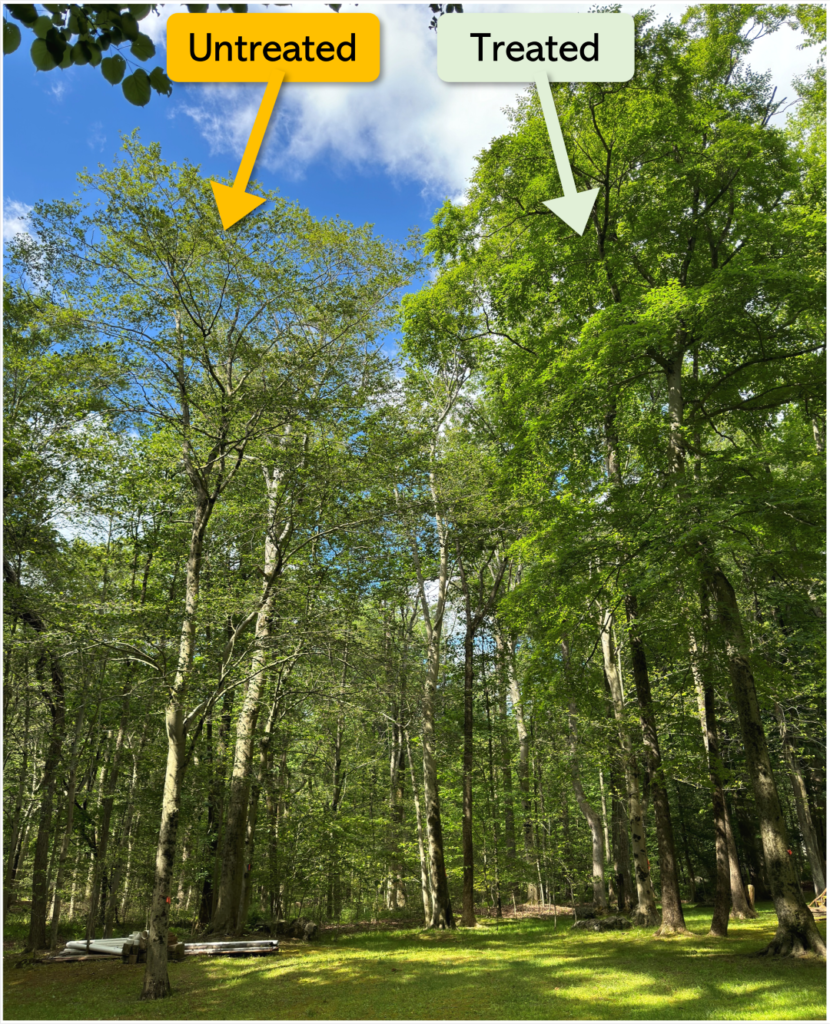
One of the key scientists who developed these treatments for Dutch elm disease, R. Jay Stipes, professor emeritus at Virginia Tech, is quoted by Bartlett rejoicing that his work might help protect another tree species.
Matt believes the treatments will be effective if applied every 2-3 years. This approach would also spread out the cost – which will depend on the arborist but Dave Anderson of Rainbow Ecoscience estimated to be about $25 / inch of dbh.
It is always best to obtain an accurate diagnosis before treatment. The next step is talking through your options with a certified arborist or tree disease specialist. The “good” thing about BLD is that it is a progressive disease and will not kill a tree in a single year. Therefore, waiting until you know the disease is present or active locally is generally recommended.
Tree injection is better than foliar application where the latter is impractical (e.g., the tree is tall) or to reduce runoff, particularly near streams. Bartlett recommends treating any beech larger than 10 cm dbh by injection; smaller trees by foliar spray.
Treated trees should be sound, without serious decay, girdling roots, or other conditions that curtail uptake. Based on research results to date, they recommend treating the tree before mid-July. Bartlett is testing the results of injecting the shortly after full leaf expansion – early to mid-June. Bartlett scientists are testing several application rates to determine how long a single injection will suppress BLD. So far they have had good results from both low and moderate label rates (0.4-1.6 fl oz/inch DBH).
All the technical information re: research into treatments and recommendations for applying either the foliar or injection treatments has been provided by Dr. Matthew Borden of Bartlett Tree Research Laboratories. He can be reached at
Dr. Borden says he is immensely grateful for the support that allows him and Dr. Loyd to travel widely to establish the BLD research sites and spend weeks collecting data each year with their team. Company founder Francis A. Bartlett established the Bartlett Tree Research Laboratories as a separate entity within the company, where capital is reinvested directly into stable, long-term support of scientific tree research and preservation. The model is well-suited to provide the flexibility and freedom needed to rapidly respond to emerging invasive species issues.
Posted by Faith Campbell
We welcome comments that supplement or correct factual information, suggest new approaches, or promote thoughtful consideration. We post comments that disagree with us — but not those we judge to be not civil or inflammatory.
For a detailed discussion of the policies and practices that have allowed these pests to enter and spread – and that do not promote effective restoration strategies – review the Fading Forests report at https://treeimprovement.tennessee.edu/
or





